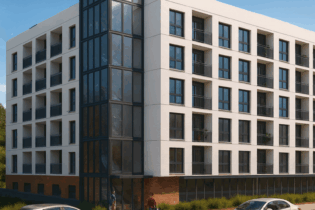South Africa is facing a looming crisis due to deterioration of water and transportation infrastructure. The costs of dealing with this, in particular the water infrastructure which is buried, are escalating as action is taken only when problems arise.
During the 1940’s and 50’s, concerted efforts were made to develop South Africa’s urban infrastructure, with focus on water supply and waste water disposal systems. This was followed by construction of major transportation routes in the 1970’s. Planning and design of these systems was largely based on developments in Europe and the United States being applied to local conditions. Initially there was an awareness of design life and the importance of maintenance. However, rapid urban population growth shifted priorities towards minimizing upfront costs, often at the expense of long-term sustainability. Instead of proactive inspection and maintenance to prevent failures, remedial action was frequently delayed until issues arose, often leading to severe consequences.In 1950 the population of South Africa’s two biggest cities, Johannesburg and Cape Town, was less than 12% of the country’s population. Currently 18% of the population is in these cities. The populations of these two cities have grown by 7,2 times (2,67% per annum) compared to the national growth rate of 4,7 times (2,08% per annum).Imbalance between population growth and infrastructure development and maintenance has led to a serious problem. In several cities in the country up to 50% of the water supplied is lost before it reaches the residents and businesses, and 50% of the wastewater fails to reach the treatment plants due to malfunctioning pipelines. Good news is that trenchless technology offers a solution. Trenchless methods for rehabilitating existing pipelines have minimal environmental and social disruption, and in most cases, at less cost and faster turnaround time than conventional open trench replacement. This approach will significantly reduce the country’s looming water crisis.
With this in mind, the webinar on October 15 will address how SASTT is following international developments in trenchless technology and how these can be adapted to local conditions.
This webinar will include the following presentations.- Introduction: Environmental benefits of trenchless installations – Alaster Goyns
- Our changing climate: The trenchless benefits – Neil van Rooyen, SASTT President
- International developments: How South Africa can benefit – Deon Pohorille of Nu Flow, (currently based in Europe)
- Cost Prediction Model: Close-Fit Lining & Pipe Bursting – Shanley Hay, Durban University of Technology








